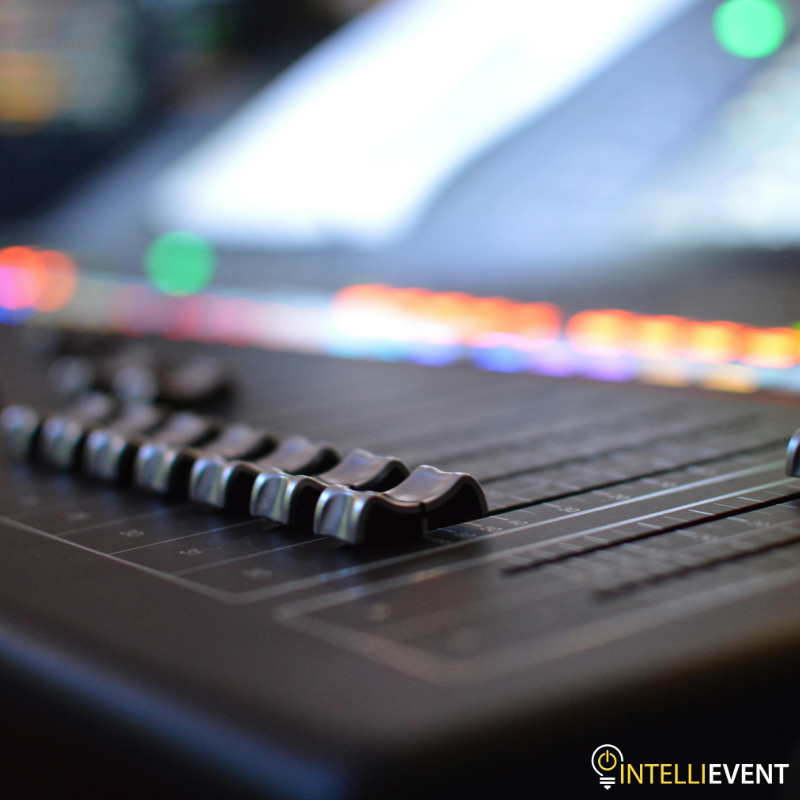Case studies showcasing audio visual charlotte nc in action
Comprehending the Inclusion of Audio Visual Innovation in Today's Educational Environments
The integration of audio-visual modern technology in educational setups has changed the teaching and finding out process. Educators currently have access to devices that accommodate different learning designs, boosting trainee involvement and cooperation. However, the consolidation of these technologies provides both opportunities and obstacles. Recognizing exactly how to properly execute these devices is important. What methods can educators utilize to take full advantage of the advantages of audio-visual technology in their classrooms?
The Evolution of Audio-Visual Innovation in Education And Learning
As instructional needs progressed over the years, audio-visual modern technology underwent significant changes that improved the understanding setting. Tools such as film projectors and slide shows were the main ways of incorporating aesthetic components right into classrooms. These early technologies provided educators with the capability to present details dynamically, yet they were limited in ease of access and interactivity.
With the introduction of videotape recorder in the 1970s, classrooms began to incorporate documented lessons, widening the extent of instructional sources. The intro of computers in the 1980s further transformed this landscape, enabling the creation of multimedia discussions and interactive understanding experiences.
The surge of the web in the 1990s marked a turning point, enabling real-time accessibility to a riches of audio-visual materials. Today, digital devices such as interactive white boards and on the internet learning systems proceed to improve the educational experience, cultivating involvement and partnership among learners.
Advantages of Audio-Visual Devices for Diverse Learning Styles
Audio-visual tools play a necessary duty in providing to diverse knowing styles by enhancing visual understanding and improving auditory involvement. By including pictures, video clips, and sound, these modern technologies produce a more comprehensive educational setting. This multifaceted strategy enables instructors to attend to the varied choices and needs of students efficiently.
Enhancing Visual Learning
Interaction in the learning process is substantially improved via making use of audio-visual devices, dealing with different learning styles. These devices, such as videos, infographics, and interactive presentations, give visual stimulations that aid understanding and retention. Aesthetic learners, particularly, advantage from the consolidation of photos and animations, which can simplify intricate concepts and improve understanding. Additionally, audio-visual resources can show real-world applications, making discovering more appropriate and interesting. By integrating shade, activity, and noise, educators can produce a vibrant learning atmosphere that captures trainees' interest and cultivates deeper cognitive links. Ultimately, the tactical use audio-visual technology not only sustains visual understanding but also enhances the general instructional experience for diverse learners.
Improving Auditory Involvement
A considerable benefit of incorporating audio-visual tools in education and learning is their capacity to enhance auditory interaction amongst students. These tools, which include multimedia discussions, podcasts, and interactive audio elements, accommodate different finding out designs, particularly benefiting acoustic students (audio visual charlotte nc). By integrating sound and narration, teachers can produce immersive experiences that catch trainees' attention and strengthen understanding. This involvement is vital, as it promotes a deeper understanding of the product and promotes retention. Furthermore, audio-visual tools can facilitate joint discovering atmospheres, urging trainees to take part in discussions and share their understandings. Inevitably, the consolidation of audio-visual innovation not only sustains acoustic interaction but also improves the total academic experience, making discovering more dynamic and reliable for all trainees
Enhancing Interaction Through Interactive Understanding

Additionally, gamification elements, such as quizzes and simulations, can boost motivation and retention, making finding out more pleasurable and reliable. These strategies not only stimulate cognitive interaction yet also accommodate diverse discovering designs, ensuring that all trainees can get involved meaningfully. Therefore, interactive learning atmospheres promote a feeling of area and belonging, inevitably leading to enhanced academic results. Via the assimilation of audio visual technology, teachers can change typical classrooms into vivid spaces where students thrive and proactively form their educational journeys.
Bridging Concept and Experiment Multimedia Resources
Multimedia sources offer as an essential web link in between academic principles and sensible application in instructional setups. By boosting interaction, promoting joint understanding experiences, and sustaining diverse knowing styles, these tools develop an extra comprehensive and dynamic knowing environment - audio visual charlotte nc. This approach not just promotes deeper click here now understanding but additionally prepares pupils for real-world difficulties

Enhancing Interaction Through Multimedia
Involvement in academic settings substantially boosts when trainers include multimedia sources into their training methods. Using video clips, podcasts, and interactive presentations enhances the discovering experience, allowing pupils to get in touch with the material on several levels. Multimedia sources accommodate numerous learning designs, offering aesthetic, auditory, and kinesthetic stimulations that can hold students' focus better than standard lecture methods. Furthermore, these resources can simplify intricate ideas, making them extra easily accessible and memorable. By integrating multimedia, instructors can create a vibrant classroom atmosphere that cultivates curiosity and inspires students. Ultimately, the calculated use of audio-visual innovation offers to bridge the void in between theoretical understanding and sensible application, enriching the academic experience for both teachers and pupils.
Helping With Collaborative Understanding Experiences
Various researches indicate that collective discovering experiences markedly improve trainee end results when incorporated with multimedia sources. Multimedia tools help with communication amongst trainees, permitting them to participate in analytical and critical thinking jointly. By making use of video conferencing, collaborative systems, and interactive discussions, instructors produce settings for teamwork and shared discovering. These technologies make it possible for students to interact their concepts successfully and get instant comments, promoting a deeper understanding of the subject matter. On top of that, multimedia resources can present complex concepts in even more absorbable layouts, advertising conversation and collaboration. Consequently, the mix of collective discovering and audio-visual news innovation not only enriches the educational experience yet additionally prepares trainees for real-world team effort dynamics, stressing the relevance of cooperation and cumulative understanding building.
Supporting Diverse Understanding Styles
While typical mentor methods frequently deal with a minimal series of learning choices, the combination of audio-visual technology offers an extra inclusive approach to education and learning. By utilizing multimedia sources such as video clips, interactive simulations, and digital discussions, teachers can address numerous discovering designs, consisting of visual, acoustic, and kinesthetic. This flexibility permits for distinguished instruction, allowing students to involve with content in means that resonate with their specific preferences. In addition, audio-visual tools can assist in deeper understanding by supplying multiple representations of intricate ideas. Because of this, students that may have a hard time with conventional approaches can find alternate paths to success, fostering an extra equitable understanding environment that supports academic accomplishment for all learners.
Difficulties in Applying Audio-Visual Technology
Although audio-visual innovation holds wonderful promise for improving academic experiences, its execution often runs into significant challenges. One key problem is the financial burden connected with investing in and maintaining such equipment, which can strain budgets, particularly in underfunded organizations. Furthermore, insufficient training for teachers can impede effective integration, leaving them ill-prepared to utilize the technology fully. Technical issues, such as software malfunctions and compatibility problems, might additionally interfere with lessons and discourage both educators and pupils. Additionally, differing levels of trainee access to technology outside the class can develop variations in discovering chances. The possibility for over-reliance on innovation may take away from necessary mentor methods, ultimately restricting the academic experience. Addressing these obstacles needs an extensive method, consisting of appropriate funding, specialist development, and fair access to sources, to ensure that audio-visual modern technology can be leveraged successfully in today's educational setups.
Best Practices for Integrating Innovation in the Class

Furthermore, promoting an interactive atmosphere with collective devices motivates trainee interaction and involvement. Using varied audio-visual resources accommodates different discovering styles, accommodating visual, auditory, and kinesthetic students. Routinely assessing the effect of technology on student learning helps instructors improve their strategies and adjust to altering needs. Finally, involving pupils in the option of innovation promotes ownership and inspiration. By sticking to these best practices, instructors can produce a dynamic class environment that efficiently integrates modern technology and improves the educational experience for all pupils.
The Future of Audio-Visual Innovation in Education
As class progressively embrace modern technology, the landscape of audio-visual tools in education and learning continues to evolve (audio visual charlotte nc). Future innovations are expected to concentrate on higher interactivity and personalization, enabling educators to customize learning experiences to specific student demands. Developments such as increased truth (AR) and digital reality (VIRTUAL REALITY) will likely offer immersive understanding atmospheres, boosting student involvement and understanding
Man-made knowledge (AI) is poised to play a considerable duty in audio-visual technology by using real-time responses and adaptive knowing paths. This assimilation may assist instructors recognize and deal with trainee obstacles more efficiently. Cloud-based systems will certainly facilitate simpler access to sources and cooperation amongst students and teachers, no matter place.
Along with these technical advances, professional development for teachers will be crucial, guaranteeing they are outfitted to make use of these devices properly. Overall, the future of audio-visual technology in education guarantees to produce more dynamic, inclusive, and impactful knowing experiences.
Frequently Asked Questions
How Can Teachers Choose the Right Audio-Visual Tools for Their Classrooms?
Selecting appropriate audio-visual devices calls for educators to analyze their instructional objectives, think about trainee requirements, assess available technology, and look for referrals from peers or specialists, making sure tools efficiently enhance learning and involvement within their details class environment.
What Budget Factors to consider Are There for Carrying Out Audio-Visual Innovation?
Budget plan considerations for implementing audio-visual modern technology include initial acquisition prices, maintenance expenses, training for team, and prospective software licensing costs. Furthermore, long-lasting financial investment in updates and substitutes ought to also be factored right into monetary planning.
Are There Details Training Resources for Educators on Audio-Visual Tools?
Several organizations offer training sources for instructors on audio-visual devices, consisting of online training courses, workshops, and training overviews. These resources intend to enhance instructors' skills and self-confidence in successfully integrating modern technology into their mentor practices.
Exactly how Do We Measure the Efficiency of Audio-Visual Technology in Discovering?
Measuring the efficiency of audio-visual modern technology in discovering involves assessing pupil interaction, understanding, retention rates, and overall academic efficiency. Studies, assessments, and empirical researches can offer useful understandings into its effect on instructional outcomes.
What Are Typical Misconceptions Regarding Audio-Visual Modern Technology in Education And Learning?
Common mistaken beliefs concerning audio-visual technology in education include the belief that it ensures involvement and finding out outcomes, as well as the assumption that all trainees benefit similarly, forgeting specific learning preferences and requirements.